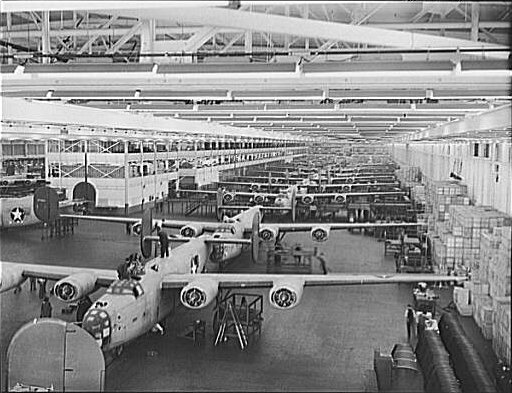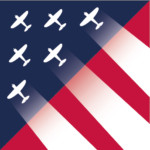History Presentation The Arsenal of Democracy Saturday, December 14th

Doors Open at 9am Presentation Starts at 10am
The Great Depression of the early 20th Century slowed many American industries, but they were not dead. By 1938, as the U.S. economy was just beginning to recover and war clouds were gathering in Europe and the Pacific, Americans produced more steel than Germany and mined almost double the amount of coal. But with many factories still idle, there was a large reserve of industrial equipment and unemployed citizens available for immediate work in the U.S.
By May 1940, President Franklin Roosevelt saw it was time to rebuild America’s manufacturing base for what he saw as the coming war. He urged Congress to increase military funding from $24 million to $700 million, saying “I should like to see this nation geared up to the ability to turn out at least 50,000 planes a year.” Roosevelt knew businesses would have to transform their factories and workforce to meet this and other production goals. To organize this effort, Roosevelt recruited business leaders who knew how to build complex products quickly and at high volume.
He started with William Knudsen, President of General Motors. Knudsen assembled a team of industrialists to work out the problems of mass-producing aircraft and other military goods. Knudsen also promoted policies that would make companies more willing to do business with the government. Knudsen and his team were able to get companies like Chrysler, an automaker, to invest millions of dollars into new facilities to produce tanks and anti-aircraft guns. Ford built a mile-long assembly line to manufacture B-24 Liberator aircraft. Henry Kaiser set up a series of shipyards on the Pacific coast that turned out cargo ships at a record rate.
By 1941, finding enough workers to meet production goals was a challenge. Many young men were drafted into the military. Two key groups, women and African Americans, helped close the gap. “Rosie the Riveter” was popularized in songs and illustrations. Many African Americans migrated throughout the country and took jobs in manufacturing.
By the end of the war in 1945, the U.S. had turned out more than 300,000 military aircraft, including 96,000 bombers, and billions of dollars’ worth of equipment and supplies to field a truly global fighting force. This unprecedented surge in production capacity also changed American society in remarkable ways.
On Saturday, December 14th, at 10:00 a.m., Lead Docent Les Doggrell will present the story of “The Arsenal of Democracy” – how U.S. industry in cooperation with the federal government armed and supplied both the U.S. and its Allies, creating the largest and most effective fighting force in the history of the world.

